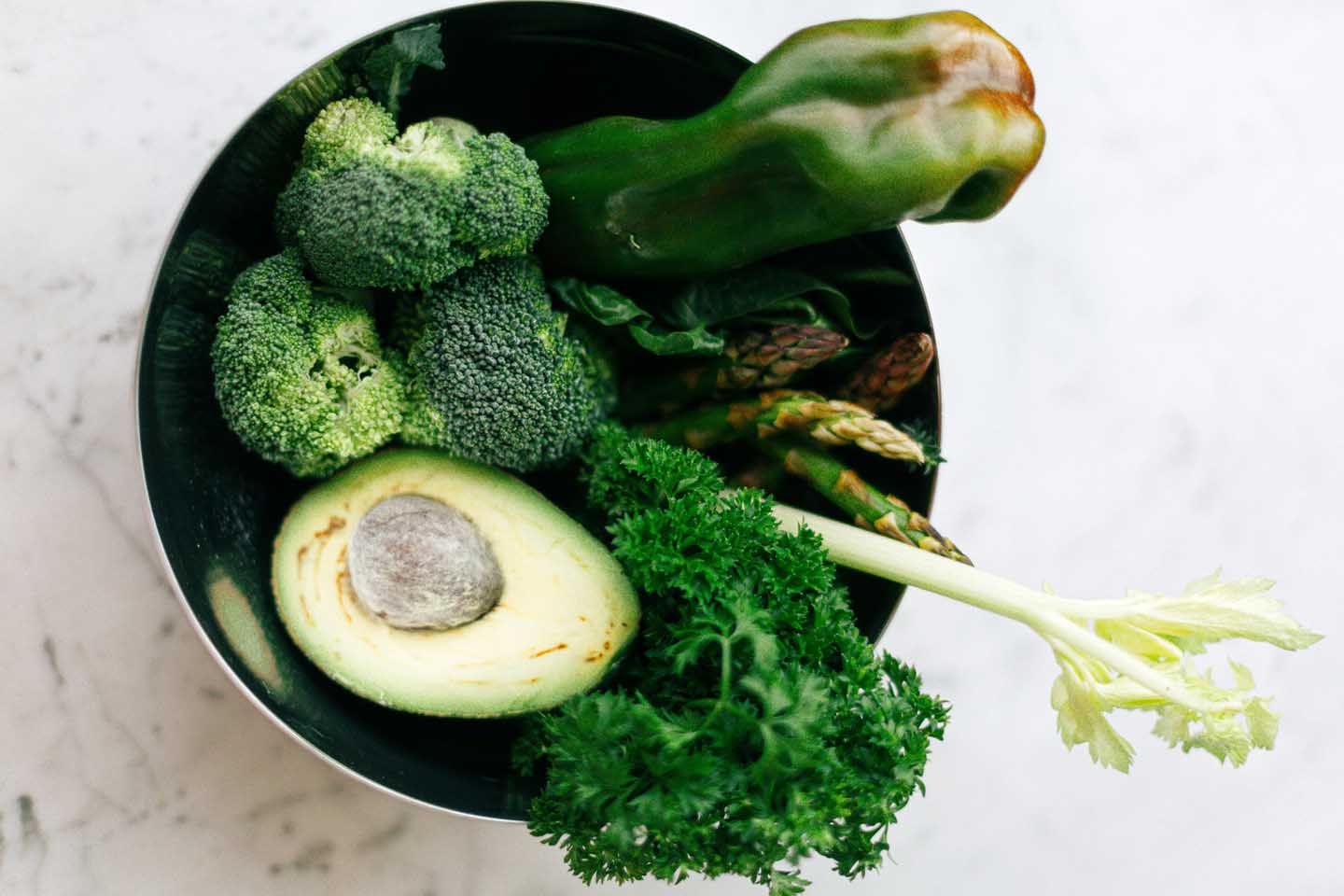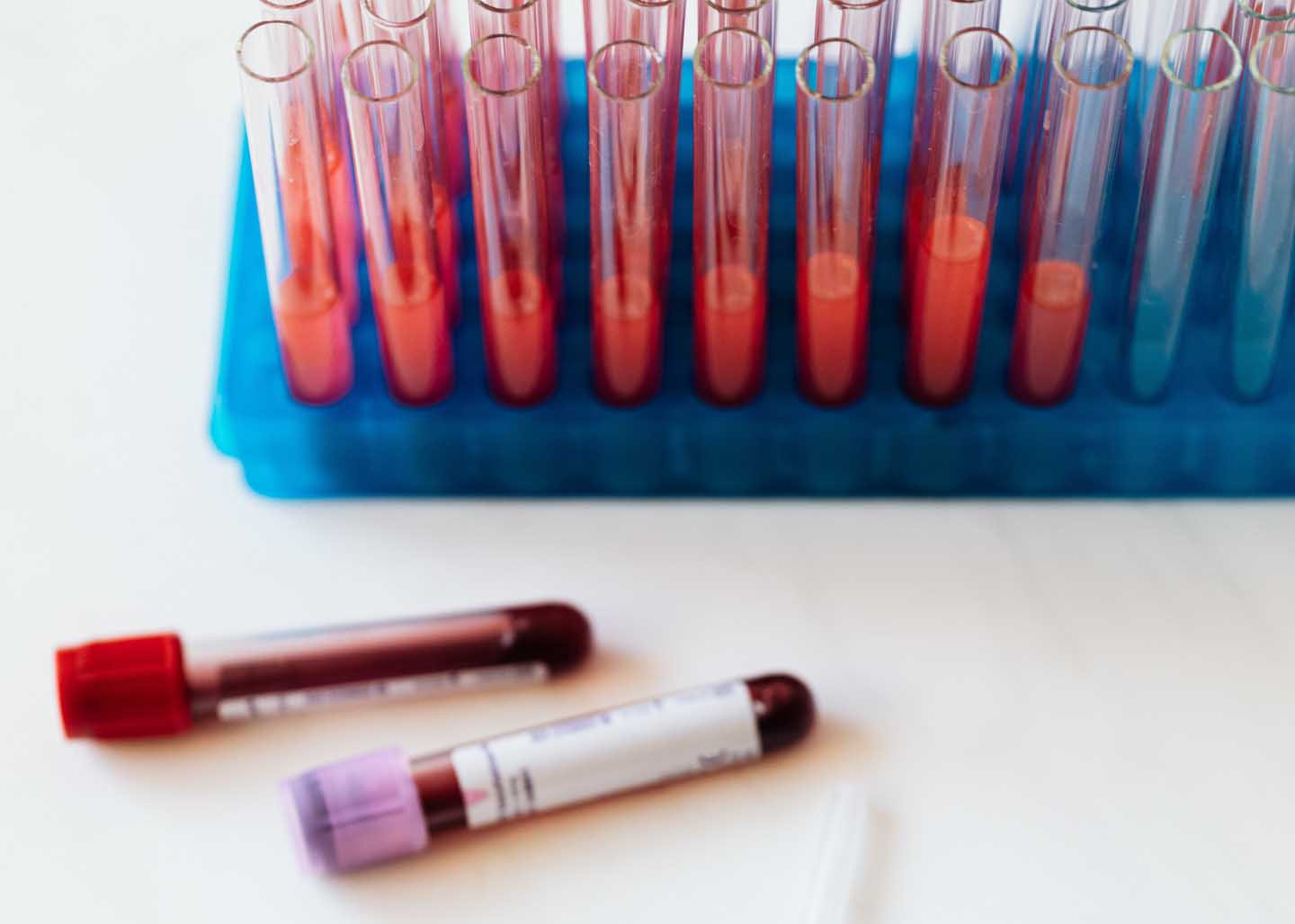They have almost the same chemical formula: chlorophyll – the green plant pigment, hemoglobin – the red blood pigment in humans, and cobalamin (vitamin B12), which is essential for the development of red blood cells. Isn’t that fascinating?

When I first noted the similarity of these three compounds during my study as a nutritionist, I was very excited. I thought of the networked thinking of Leonardo da Vinci. He said that nothing stands in this world alone. Everything that happens, that was discovered or invented, is related to something else, maybe even to a whole. Where was the connection with my discovery?
At first, of course, I thought of the daily diet. What was the original diet for humans? I found the answer in the book of books, the Bible. There on the first pages, God said to the first humans, Adam and Eve: “I have given you all the plants that bring forth seeds in all the earth, and all the trees with fruits that bring seeds.” Genesis 1:29 Plants were the foundation of the first diet. In Genesis 3:18 vegetables were added to the diet, which are normally rich in chlorophyll.
In order for plants to grow, they have to photosynthesize. For photosynthesis to work at all, the plant needs chlorophyll and carotenoids. They collect the light from the sun and pass it on. In addition, there are mechanisms in the leaves that prevent too much light from entering when there is very strong sunlight. Otherwise the leaves would be destroyed. But on the other hand we know ingenious facilities, so that plants growing on the forest ground in the shade of large trees can still benefit from sunlight.
Cancer Prevention
Now we know that chlorophyll is not only important for plants, but also for us humans. It inhibits in vitro, ie. in the test tube during scientific experiments, the mutagenic effect of pyrolysis products that are formed when animal products are exposed to great heat. Mutagens are substances that cause changes in the genetic make-up. If, in our case, meat is exposed to very high heat, which happens when roasting or grilling, this can result in mutagenic products. Chlorophyll can counteract this by binding these mutagens and thereby inactivating them. If you eat some grilled meat at all, you should at the same time eat a big bowl of lettuce and a good amount of bell pepper. There is a lot of chlorophyll in both.

There are chlorophyllin supplements on the market, which consist of a modified chlorophyll, where the central atom has been replaced with copper, and some endings may be modified as well. Chlorophyllin is more stable, and unlike chlorophyll it is water soluble. This supplement has a similar effect than chlorophyll, but they are not equally effective for all applications.
In vivo, that is in living humans or animals, a cancer-inhibiting effect of chlorophyll and chlorophyllin could be demonstrated in liver cancer.1)Sudakin DL. Dietary aflatoxin exposure and chemoprevention of cancer: a clinical review. J Toxicol Clin Toxicol. 2003;41(2):195-204. DOI: 10.1081/clt-120019137
Egner PA, Munoz A, Kensler TW. Chemoprevention with chlorophyllin in individuals exposed to dietary aflatoxin. Mutat Res. 2003;523-524:209-216. DOI: 10.1016/s0027-5107(02)00337-8 The effect of the chlorophyllin was strongest when administered simultaneously with the carcinogen (cancer-causing substance). The main carcinogen causing liver cancer is aflatoxin, a substance produced by a fungus that is present in moldy corn, peanuts or soybeans. Chlorophyll blocks the binding of carcinogens to the DNA, that contains our genetic code.2)Kensler TW, Groopman JD, Roebuck BD. Use of aflatoxin adducts as intermediate endpoints to assess the efficacy of chemopreventive interventions in animals and man. Mutat Res. 1998;402(1-2):165-172. DOI: 10.1016/s0027-5107(97)00294-7
Simonich MT, Egner PA, Roebuck BD, et al. Natural chlorophyll inhibits aflatoxin B1-induced multi-organ carcinogenesis in the rat. Carcinogenesis. 2007;28(6):1294-1302. DOI: 10.1093/carcin/bgm027
Breinholt V, Hendricks J, Pereira C, Arbogast D, Bailey G. Dietary chlorophyllin is a potent inhibitor of aflatoxin B1 hepatocarcinogenesis in rainbow trout. Cancer Res. 1995;55(1):57-62. Full text Heterocyclic amines found in cooked meat are another carcinogen that showed significant reduction when ingesting chlorophyll.3)Dashwood R, Yamane S, Larsen R. Study of the forces of stabilizing complexes between chlorophylls and heterocyclic amine mutagens. Environ Mol Mutagen. 1996;27(3):211-218. DOI: 3.0.co;2-h”>10.1002/(SICI)1098-2280(1996)27:3<211::AID-EM6>3.0.CO;2-H Studies have found that people who eat a lot of green vegetables have lower cancer rates. This could actually be due to the anti-cancer properties of chlorophyll.
Deodorant
Chlorophyllin also has an antibacterial and deodorant effect. It is therefore found in cosmetics and personal care products. The observation that chlorophyllin had deodorizing effects on foul-smelling wounds, led clinicians to administer the substance orally to control fecal odor in patients with colostomy.4)Chernomorsky SA, Segelman AB. Biological activities of chlorophyll derivatives. N J Med. 1988;85(8):669-673. In a study of 62 nursing home patients, the administration of chlorophyllin tablets was found to be helpful in controlling body and fecal odors. It aided also in easing chronic constipation and assisted in reducing excessive gases.5)Young RW, Beregi JS, Jr. Use of chlorophyllin in the care of geriatric patients. J Am Geriatr Soc. 1980;28(1):46-47. DOI: 10.1111/j.1532-5415.1980.tb00124.x
Wound Healing
Research in the 1940s indicated that chlorophyllin was able to slow the growth of certain bacteria and accelerate wound healing. It was since then added to ointments for the treatment of persistent open wounds.6)Kephart JC. Chlorophyll derivatives – their chemistry, commercial preparation and uses. Econ Bot. 1955;9:3-38. Several subsequent studies using a Papain-urea-chlorophyllin ointment confirmed those findings.7)Smith RG. Enzymatic debriding agents: an evaluation of the medical literature. Ostomy Wound Manage. 2008;54(8):16-34. In a pilot study, a chlorophyllin solution was beneficial in the treatment of acne.8)T J Stephens et.al. Pilot Study of Topical Copper Chlorophyllin Complex in Subjects With Facial Acne and Large Pores. J Drugs Dermatol. 2015 Jun;14(6):589-92.
Blood Formation
Chlorophyll has a blood-forming effect as well. Now we are into networked thinking with hemoglobin. As already mentioned, chlorophyll is a very large molecule that looks almost similar to the very large molecule of hemoglobin. In chlorophyll, the central atom around which all other atoms are built is magnesium. All green plants are therefore an excellent magnesium source. In hemoglobin, the pigment in red blood cells that is responsible for transporting oxygen, iron is the central atom.
Chlorophyll is the essential substance for the plant. Hemoglobin is essential for humans. And both are built almost identically, so they can easily be converted into one another. In fact, with chlorophyll obtained from wheat grass, anemia and leukemia can be very positively influenced. In a pilot study of patients with the blood disorder thalassemia, the requirements for blood transfusions could be significantly reduced with the application of wheat grass juice.9)R.K. Marwaha et. al. Wheat Grass Juice reduces Transfusion Requirement in Patients with Thalassemia Major: A Pilot Study. Indian Pediatrics 2004;41:716-720

Sources of your blood building chlorophyll will be any form of green leaves. Especially rich sources are spinach, parsley and garden cress.10)Chlorophyll and Chlorophyllin, Oregon State University Some other green plants have reasonable amounts, like green beans, peas, and green pepper. Eating those products on a regular basis will make the use of supplements needless.
Vitamin B12 is just as vital as hemoglobin. Without it, the red blood cells would not be able to develop properly. Cobalamin is also necessary for the functioning of the nerves, the immune system and the formation of DNA. A deficiency in vitamin B12 affects every cell in our body. By the way, the central atom in cobalamin is cobalt, hence the name.


Creative Patterns
Is it a coincidence that our Creator God built these three important molecules almost the same way? Or is He pursuing a plan? If He has given us the plants for food and they have a protective role for our body, reasonable people will eat mainly or entirely from these plants.
The whole physiology of humans, animals and plants shows to a large extent the same systems, the same enzymes, the similar structure of the cells and the same metabolic pathways. He is the creator of all three, yes of the whole universe. He networked everything. Everything He has created is in some way serving other created beings.
The more I am allowed to penetrate into the wonders of creation, and we have truly wonderful insights into both the micro and the macrocosm, the more I admire God’s imagination, his greatness and creativity. And I am grateful that I can be part of it. Although I am only a tiny part, but wonderfully precious and valuable, networked into a larger whole, where everyone is dependent on the other. And I want to fulfill my part that is meant for me. Which part is mine, that is worth thinking about.

Stay Always Up to Date
Sign up to our newsletter and stay always informed with news and tips around your health.

Esther Neumann studied Nutrition at the University of Vienna. Since then she served as an author for the health magazine “Leben und Gesundheit” and conducted health lectures in various locations of Austria.
References
| ↑1 | Sudakin DL. Dietary aflatoxin exposure and chemoprevention of cancer: a clinical review. J Toxicol Clin Toxicol. 2003;41(2):195-204. DOI: 10.1081/clt-120019137 Egner PA, Munoz A, Kensler TW. Chemoprevention with chlorophyllin in individuals exposed to dietary aflatoxin. Mutat Res. 2003;523-524:209-216. DOI: 10.1016/s0027-5107(02)00337-8 |
|---|---|
| ↑2 | Kensler TW, Groopman JD, Roebuck BD. Use of aflatoxin adducts as intermediate endpoints to assess the efficacy of chemopreventive interventions in animals and man. Mutat Res. 1998;402(1-2):165-172. DOI: 10.1016/s0027-5107(97)00294-7 Simonich MT, Egner PA, Roebuck BD, et al. Natural chlorophyll inhibits aflatoxin B1-induced multi-organ carcinogenesis in the rat. Carcinogenesis. 2007;28(6):1294-1302. DOI: 10.1093/carcin/bgm027 Breinholt V, Hendricks J, Pereira C, Arbogast D, Bailey G. Dietary chlorophyllin is a potent inhibitor of aflatoxin B1 hepatocarcinogenesis in rainbow trout. Cancer Res. 1995;55(1):57-62. Full text |
| ↑3 | Dashwood R, Yamane S, Larsen R. Study of the forces of stabilizing complexes between chlorophylls and heterocyclic amine mutagens. Environ Mol Mutagen. 1996;27(3):211-218. DOI: 3.0.co;2-h”>10.1002/(SICI)1098-2280(1996)27:3<211::AID-EM6>3.0.CO;2-H |
| ↑4 | Chernomorsky SA, Segelman AB. Biological activities of chlorophyll derivatives. N J Med. 1988;85(8):669-673. |
| ↑5 | Young RW, Beregi JS, Jr. Use of chlorophyllin in the care of geriatric patients. J Am Geriatr Soc. 1980;28(1):46-47. DOI: 10.1111/j.1532-5415.1980.tb00124.x |
| ↑6 | Kephart JC. Chlorophyll derivatives – their chemistry, commercial preparation and uses. Econ Bot. 1955;9:3-38. |
| ↑7 | Smith RG. Enzymatic debriding agents: an evaluation of the medical literature. Ostomy Wound Manage. 2008;54(8):16-34. |
| ↑8 | T J Stephens et.al. Pilot Study of Topical Copper Chlorophyllin Complex in Subjects With Facial Acne and Large Pores. J Drugs Dermatol. 2015 Jun;14(6):589-92. |
| ↑9 | R.K. Marwaha et. al. Wheat Grass Juice reduces Transfusion Requirement in Patients with Thalassemia Major: A Pilot Study. Indian Pediatrics 2004;41:716-720 |
| ↑10 | Chlorophyll and Chlorophyllin, Oregon State University |
Thank you for this very interesting article ! I was not aware of the connection between chlorophyll and hemoglobin to that extent, especially the fact that one can be converted into the other. Also the similarity with vitamin B12 was new to me. As for this connection, could it be possible that our bodies can produce vitamin B12 from chlorophyll ? The question is if you could do without vitamin B12 supplementation as a vegan… Thanks in advance for your answer !
As far as I know there is no mechanism to produce Vitamin B12 from chlorophyll within the body. Who is producing this vitamin are bacteria. No matter where you find it, the source is always bacteria. That is part of the problem. With advanced hygiene, we eliminate much of that bacteria, while some Indian communities using no animal products are rarely deficient for B12.